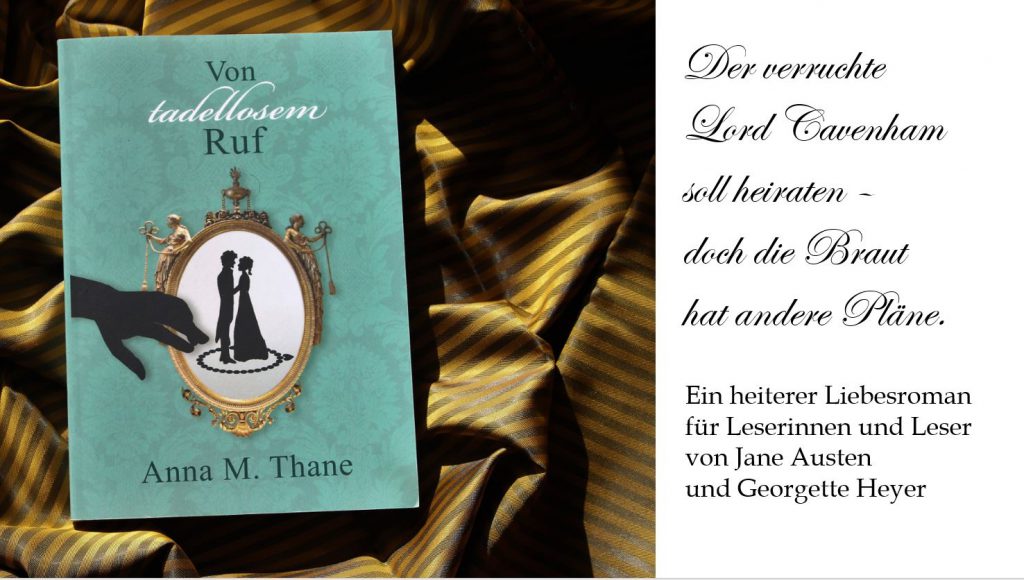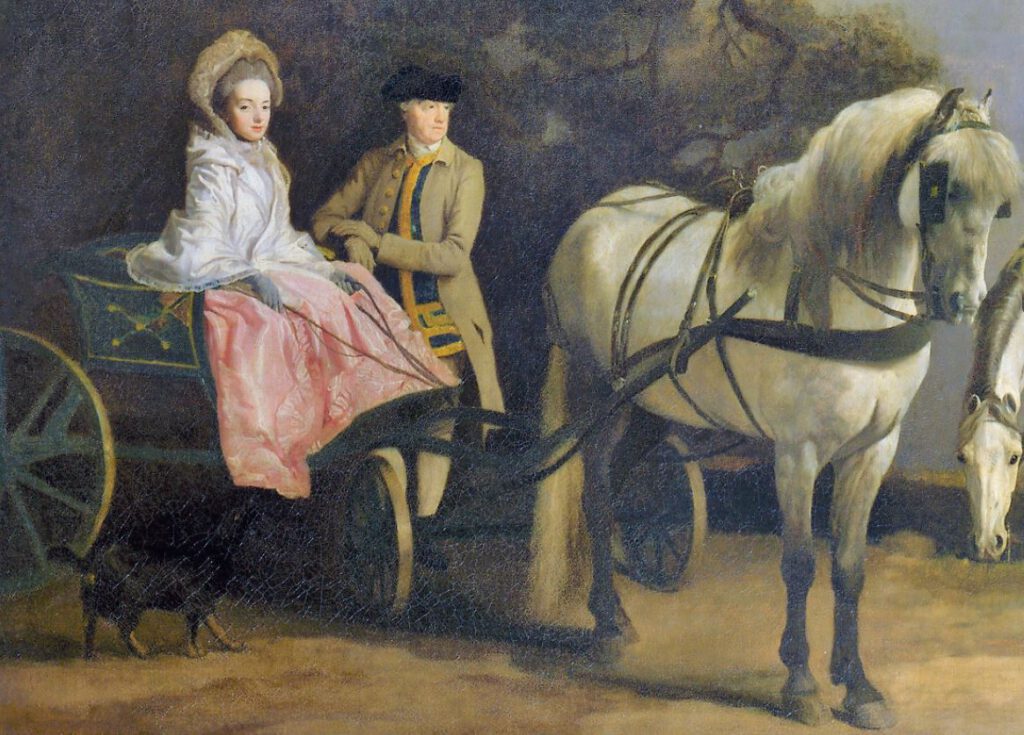
During the warm summer months, noble ladies had always enjoyed riding in a carriage driven by their cavalier. However, ladies took the reins in their own hands from the second half of the 18th century. Driving out in a park with an elegant pony, accompanied only by a lackey, created a new fashion in English aristocratic circles.
Coach-makers hastened to construct small, elegant vehicles for their wealthy clients. As they used the latest technologies, also men soon eyed the light, manoeuvrable vehicles favourably.
Finest material for a luxury vehicle
One of the striking features of the Park Phaeton is its material. The coachmaker used wood, metal – and rattan. Today, we associate rattan mainly with the Victorians, who loved the exotic flair of the cane. But rattan had also been appreciated by the Georgians.
Design inspired by antiquity
In fact, even in the 18th century rattan wasn’t exactly a new material. Already the Romans had used it for furniture. Thus, in the age of Neo-classicism, the British nobility with their interest in adopting antiquity was delighted by rattan: It was great for making references to the noble Roman culture. What could be more perfect than driving a carriage with such elegant elements in a lush park like a Roman demi-goddess?

Coachmakers use light-weight alternative to wood
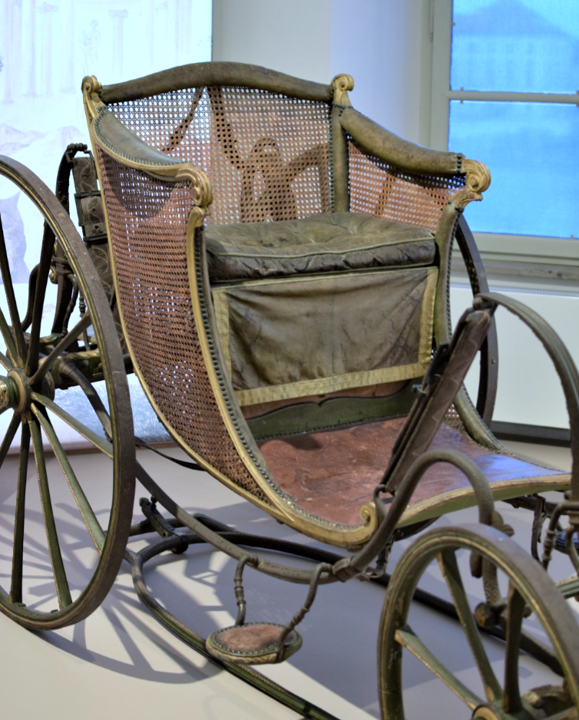
Britain imported Rattan palm canes from the Malay Peninsula. Craftsmen soon adopted the material, as it was a light-weight alternative to solid wood. Furniture makers such as Thomas Sheraton used the woven canes for areas that needed flexibility, be it armchairs, sofas or bed frames. Thus, it is of little surprise that coach-makers ordered furniture makers to create light rattan seats for the Park Phaeton.
Rattan wasn’t the only new material in coach building. Due to technical improvements for steel-making from about 1768, coach-makers began using light metal to create lightweight carriages.
The effect of the new material was striking: by reducing the use of solid wood, the Park Phaeton had a weight of only 140 kg. For comparison: the weight of George, the Prince Regent, was 152 kg in 1830; the average weight of a conventional carriage was about 820 kg.
S-springs for sitting comfort
Light metal was the material of choice for the suspension consisting of four multiple metal leaf springs. These “S-springs” made the Park Phaeton very comfortable to sit in.
Easy steering with the metal wheel plate
The technological highlight of the Park Phaeton was the so-called wheel plate, a rotation assembly entirely made of metal. This part of a carriage had so far been made of wood. Though also wooden wheel plates meant that there was less friction on the front wheel, the use of a metal wheel plate made steering still easier.
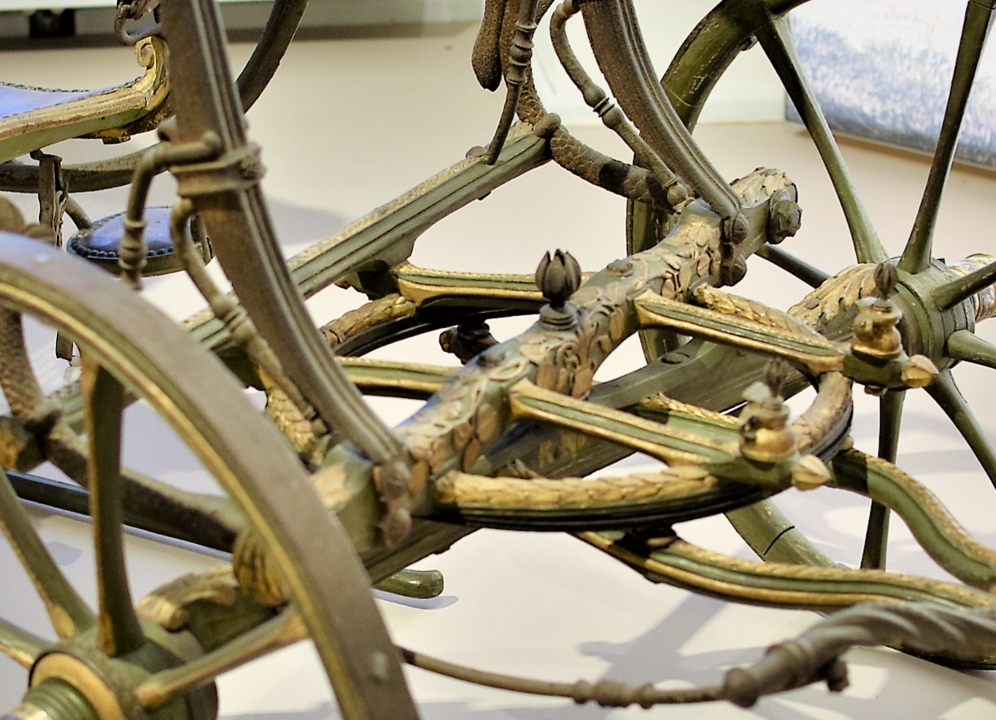
The Continent embraces the Park Phaeton
The British Park Phaeton became so popular in the 1770ies that aristocrats on the Continent imported it for their pleasure gardens.
Karl Theodor, Elector of Bavaria, fluent in English and very much interested in new technologies invented in Britain, ordered a highly elegant and sophisticated Park Phaeton in 1775 directly from London, probably from the coach-builder Mr Ovenden.
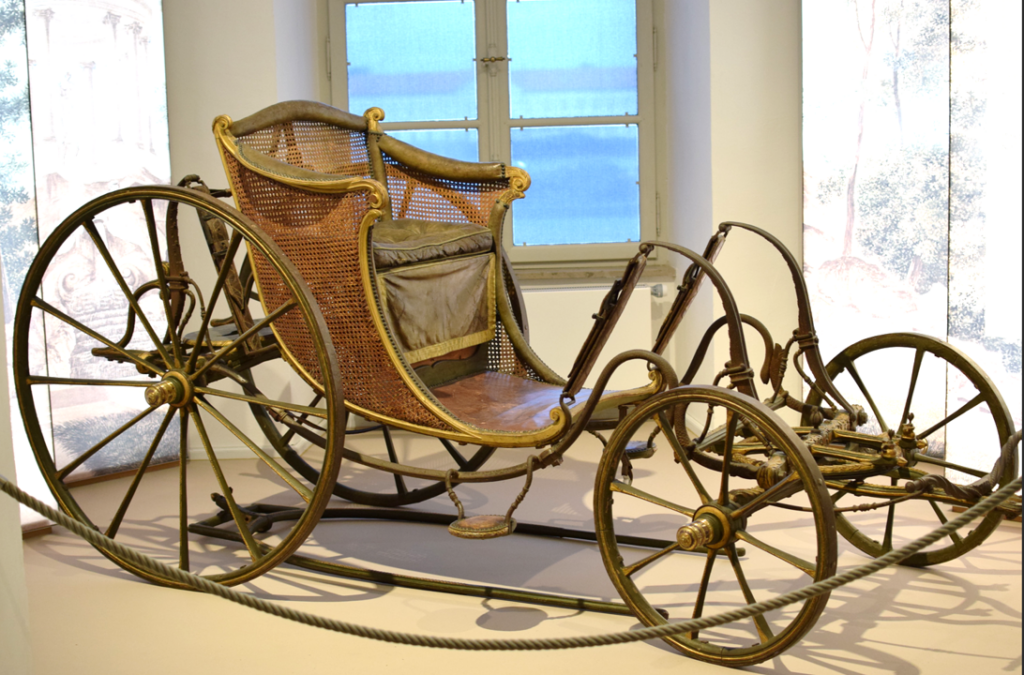
Beautiful design to match the splendour of nature
Karl Theodor’s Park Phaeton was a beautiful vehicle, originally painted moss green with gilt carvings. The leather of the braces was red, the upholstery and arm rests were green. To match the splendour of a garden, floral friezes decorated the undercarriage, an opening tulip sat on the perch bolt. The front ends of the iron perches were shaped to resemble two fish, probably an allusion to sparkling fountains and lakes often to be found in parks.
Sources
Fine Art Restoration Company: “Rattan restoration: reviving cane furniture”; 30th May 2023; https://fineart-restoration.co.uk/news/rattan-restoration-reviving-cane-furniture/
Marstallmuseum, Schloss Nymphenburg 208, 80638 Munich / Germany
Related articles
Article by Anna M. Thane, author of the novel
“Von tadellosem Ruf” (http://amzn.to/2TXvrez)
